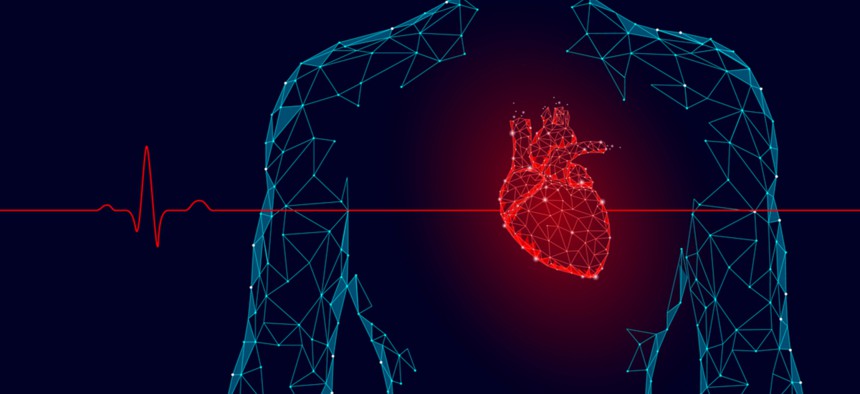NASA Tech Could Replace Passwords with Your Heartbeat

LuckyStep/Shutterstock.com
The space agency announced several health and biotech technology transfer opportunities.
NASA produces cutting-edge products and solutions for space exploration that often have untapped applications here on Earth. Through its Technology Transfer Program, businesses can license NASA-developed technologies and from them create and manufacture innovative commercially relevant uses for public benefit.
The space agency on Monday launched several new technology transfer opportunities for potential applications related to health, medicine and biotechnology.
HeartbeatID
Fingerprints and retinal and face scans are commonly-used biometric means to authenticate and verify that people are who they say they are. According to NASA, “the heartbeat system is a new biometric technique to verify someone's identity.”
In the HeartbeatID solicitation, agency officials said the movement of cardiac muscles and signals sent within human hearts “can be used in everything from replacing individuals’ PC passwords to [accessing] a bank account,” and they also listed a range of other applications, particularly in the realm of personal, internet and national security. Essentially, the nascent technology provides a means to use the human heart’s electrical actions as biometric distinguishers.
NASA notes that this specific technology transfer opportunity is patent only, and there’s no software available for license, but those who are interested in licensing the technology to develop more commercial uses can submit an application through its online portal for approval.
PUMA
Through its Portable Unit for Metabolic Analysis, or PUMA tech transfer opportunity, entities can tap into battery-powered, wearable devices created at NASA’s Glenn Research Center that provide “highly precise real-time measurements of human metabolic functions,” such as users’ oxygen intake, heart rate, temperature and beyond. According to the agency, PUMA “represents a major breakthrough in portable metabolic analysis.”
The durable, compact units wirelessly relay information they capture to laptop computers for instant analysis and they are particularly well-suited to detect oxygen deficiencies and drops almost as soon as they occur. The devices can also be used in extreme environments, NASA said, including underground, underwater, and in aviation. Individuals who aim to license PUMA and market or help advance its uses not just for astronauts, but for miners, pilots, firefighters, divers, climbers, patients, athletes and more may also submit an application online.
Subcutaneous Structure Imager
The agency’s Glenn Research Center also developed a novel system—a subcutaneous, or below-the-skin, structure imager—that can be used to locate veins “in challenging patient populations, such as juvenile, elderly, dark-skinned, or obese patients.” The system offers users the ability to conveniently access clear visualizations of veins or other vascular structures.
In terms of commercial applications, NASA officials said “compared to other state-of-the-art solutions, the imager is inexpensive, compact, and very portable, so it can be used in remote third-world areas, emergency response situations, or military battlefields.” Those interested in putting it to use may submit an online application.
Other health-focused technology transfer opportunities that the space agency launched Monday include biochemical sensors that may be used in clinical diagnostics and a reproducible, cost-effective technology and process for creating 2D and 3D human tissue formations that NASA believes have uses across pharmaceutical development and regenerative medicine.
Licensing applications for each of the opportunities are due by Feb. 21, 2021.






